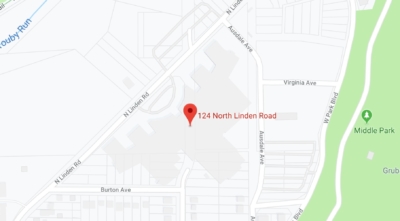Career Technical Education (CTE) is helping our nation meet the very real and immediate challenges of economic development, student achievement and global competitiveness.
Some 14 million students are enrolled in CTE encompassing every state, with programs in nearly 1,300 public high schools and 1,700 two-year-colleges. (1)
A Model for Success
CTE programs are organized by 16 Career Clusters™ and 79 Career Pathways. CTE offers a compete range of career options for students, helping them discover their interests and the educational pathway that can lead to success in high school, college and their chosen career/profession.A Model for Success
CTE programs are organized by 16 Career Clusters™ and 79 Career Pathways. CTE offers a compete range of career options for students, helping them discover their interests and the educational pathway that can lead to success in high school, college and their chosen career/profession. The avalible CTE programs at Mansfield Senior High are listed in the side menu. Our CTE programs are in 3 period blocks both Junior and Senior year giving you 3 elective credits each year you are in the program. Please click on each program to learn more about them.
FACT:
The average high school graduation rate for students concentrating in CTE programs is 90.18 percent compared to an average national freshman graduation rate of 74.9 percent. (2)
Making a Difference
Nationwide, CTE programs are changing, evolving and innovating to create an environment of opportunity within our nation’s schools.Making a Difference
Nationwide, CTE programs are changing, evolving and innovating to create an environment of opportunity within our nation’s schools. Increasing the relevance and impact of student’s education. Improving graduation rates in high school and college. Actively helping students gain the skills, technical knowledge, and the rigorous academic foundation and real-world experience they need for high-skill, high-demand, high-wage careers.
FACT:
Seventy percent of students concentrating in CTE areas stayed in post-secondary education or transferred to a four-year degree program, compared to an average state target of 58 percent. (3)
Working for America
With leadership from CTE State Directors and a dedicated army of educators, counselors and administrators, CTE is delivering outcomes through higher education and greater skillsWorking for America
With leadership from CTE State Directors and a dedicated army of educators, counselors and administrators, CTE is delivering outcomes through higher education and greater skills—and ultimately providing a skilled, sustainable workforce to enhance the performance and global competitiveness of American business and industry.
FACT:
Experts project 47 million job openings in the decade ending 2018. About one-third will require an associate’s degree or certificate, and nearly all will require real-world skills that can be mastered through CTE.(4)
Partnering with Business
CTE actively partners with employers to design and provide high-quality programs founded in the standards students must meet to compete in the job market.Partnering with Business
CTE actively partners with employers to design and provide high-quality programs founded in the standards students must meet to compete in the job market. Through advisory committees, internships, teacher externships, workplace experience and other interactions, employers are able to share information about expectations, technical requirements and workplace behavior—driving innovation and world-class performance.
Investing in America
Investing in CTE is vital to meet the urgent challenges of economic development, student achievement and global competitiveness—and keep America working.Investing in America
The federal investment in CTE is authorized by the Carl D. Perkins Career and Technical Education Act of 2006 (commonly referred to as Perkins). All 50 states, the District of Columbia and the U.S. territories rely on this funding to support secondary, post-secondary and adult CTE programs. Investing in CTE is vital to meet the urgent challenges of economic development, student achievement and global competitiveness—and keep America working.
